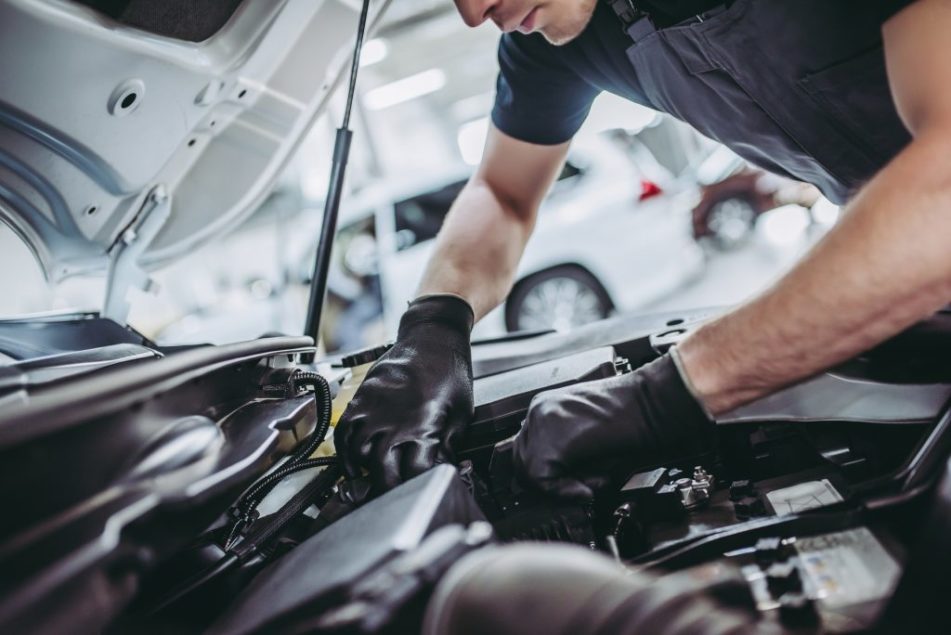Your vehicle’s radiator plays a critical role in maintaining the engine’s temperature and overall performance. When the radiator begins to fail, it can lead to overheating, engine damage, and costly breakdowns. Knowing the early warning signs can save you from stress and expensive repairs. In this blog, we’ll uncover the top 5 signs your radiator needs repairs, what they mean for your vehicle, and how you can address them before they escalate. If you’re looking for radiator repairs in Preston, identifying these issues early can keep your car running safely and efficiently for the long haul.
Engine Overheating
One of the most obvious signs of a radiator issue is your engine overheating. If the temperature gauge on your dashboard climbs higher than normal, or if you see steam coming from under the bonnet, it’s time to act fast.
An overheating engine is often caused by a radiator that’s not doing its job properly. This could be due to a coolant leak, clogged fins, or a failing radiator cap. These problems prevent the coolant from circulating properly, causing heat to build up inside the engine.
Left untreated, engine overheating can lead to warped cylinder heads, blown head gaskets, and engine failure. If your car consistently runs hot, it’s a clear indication that something isn’t right with your cooling system—and the radiator is often the culprit.
Early intervention and routine checks can prevent this situation. If you’re frequently topping up coolant or experiencing hot engine temperatures, it’s time to get your radiator inspected by a qualified mechanic.
Coolant Leaks Under the Vehicle
Have you noticed colourful puddles forming under your car after it’s been parked? That could be coolant, and it’s a tell-tale sign that your radiator or another part of the cooling system is leaking.
Coolant is usually green, orange, or pink in colour and has a sweet smell. If you’re spotting leaks in your driveway or garage, it’s important not to ignore them. A leaking radiator means your engine isn’t receiving the coolant it needs, and this can lead to overheating or internal damage.
Radiators can develop leaks from corrosion, damage to hoses, or worn-out seals. Over time, small leaks can become major issues. Acting early can save you from costly repairs or full radiator replacements. A pressure test can quickly pinpoint the source of the leak and help you understand the scope of the issue.
Low Coolant Levels Without Obvious Leaks
Sometimes, your coolant level may drop without any visible puddles or drips. This can be especially confusing for car owners and might indicate a hidden radiator issue.
Internal leaks or evaporation caused by high temperatures could be the reason your coolant is disappearing. Cracks in the radiator or problems with the radiator cap might be allowing coolant to escape or burn off.
Consistently low coolant levels can create air pockets in the system, which further impacts the radiator’s ability to function. If your coolant reservoir is always running low, but you can’t find any leaks, it’s time to have your radiator professionally inspected. Ignoring it may lead to unpredictable temperature fluctuations and engine stress.
Rust or Discolouration on the Radiator
Rust is the enemy of all metal car components, and your radiator is no exception. Rust or visible discolouration on the radiator or around the engine bay is a red flag that shouldn’t be overlooked.
Corrosion usually occurs when air or contaminants enter the cooling system. This can lead to rust particles breaking off and circulating through the system, potentially clogging the radiator and affecting its performance. You may also notice the coolant itself becoming a brownish colour due to rust contamination.
When corrosion takes hold, it can weaken the radiator structure and result in leaks or poor heat transfer. A thorough flush of the system and a detailed inspection can determine whether the radiator needs to be cleaned, repaired, or replaced.
Sludge Buildup in Coolant
Healthy coolant should be brightly coloured and relatively clear. If you notice that the coolant has turned into a thick, muddy sludge, it’s a sign that something has gone wrong within your cooling system.
Sludge often results from oil mixing with coolant or from severe rust and debris buildup. This thick substance can block the radiator’s passages and reduce its ability to cool the engine efficiently.
When sludge builds up, it creates strain on the water pump, increases engine temperatures, and can cause irreversible damage if not addressed. A professional radiator flush can help clear the system, but in some cases, extensive buildup may require a complete radiator replacement.
Regular coolant checks and timely maintenance help avoid this problem, ensuring the radiator stays in top shape.
Noticing any of these signs? Don’t wait for a breakdown to happen. If you suspect your vehicle is showing symptoms of radiator trouble, get in touch with Albert ST Automotive today. We offer professional radiator repairs in Preston and also service surrounding suburbs including Northcote, Reservoir, Heidelberg, Coburg, and Bundoora. Our experienced team will inspect your radiator, diagnose any issues, and provide reliable, affordable repair solutions to keep your vehicle running smoothly.
Call us now on (03) 9470 1052 to book your radiator service or speak with our friendly team. Your car’s cooling system is in safe hands with Albert ST Automotive.

